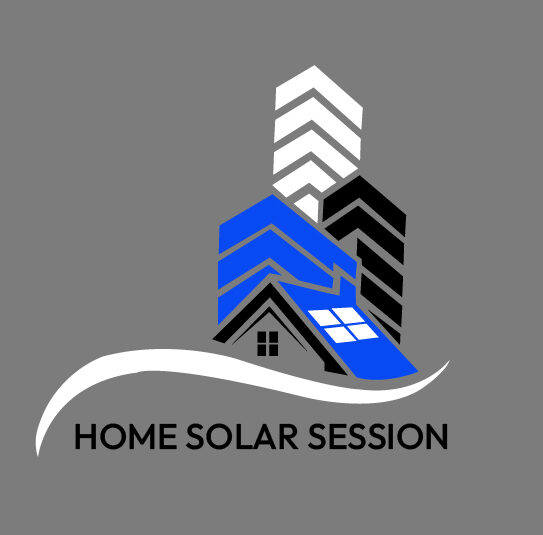From Drawing Board to Solar Panel: The Evolution of Solar Architecture Design
Solar architecture design is a rapidly evolving field that combines innovative technologies with aesthetically pleasing and sustainable building design. From the early days of clunky solar panels that were integrated into roofs as an afterthought, to the sophisticated and sleek solar solutions that are seamlessly integrated into the architecture of today, the evolution of solar architecture design has been nothing short of remarkable.
The Early Days: Functional, Yet Unattractive
In the past, solar architecture design was largely focused on functionality rather than aesthetics. Early solar panels were bulky, inefficient, and often installed as an afterthought, disrupting the overall design of a building. They were seen as an add-on rather than an integral part of the building’s design.
- Case in point: The Solar One project in California in the 1980s utilized large, unsightly solar collectors that were an eyesore for the surrounding community.
The Shift Towards Integration
As technology advanced, architects and designers began to see the potential for solar panels to be seamlessly integrated into building designs. This shift towards integration marked a turning point in solar architecture design, as buildings started to incorporate solar panels as an essential part of their overall aesthetics.
- Example: The CIS Tower in Manchester, England, is a prime example of early integration of solar technology into building design. The entire south façade of the building was covered with solar panels, creating a visually striking and energy-efficient structure.
The Rise of Building-Integrated Photovoltaics (BIPV)
Building Integrated Photovoltaics (BIPV) is a concept that has gained traction in recent years, allowing solar panels to be seamlessly integrated into the design of a building. BIPV products come in a variety of forms, from solar roof tiles to solar facades, offering architects and designers more flexibility in incorporating solar technology into their projects.
- Case Study: The Edge, a sustainable office building in Amsterdam, features a stunning façade composed of 4,300 solar panels that not only generate energy but also serve as a unique design element.
The Future of Solar Architecture Design
As solar technology continues to advance, the possibilities for solar architecture design are endless. Solar panels can now be customized to fit seamlessly into a building’s design, offering architects and designers unparalleled creativity and flexibility in incorporating solar technology into their projects.
- Statistics: According to the International Energy Agency, solar photovoltaic capacity is expected to triple by 2030, further driving the integration of solar technology into building design.
Conclusion
The evolution of solar architecture design from clunky add-ons to seamlessly integrated building components has been a testament to the ingenuity and creativity of architects and designers. As technology continues to advance, we can expect to see even more innovative and sustainable solar solutions that not only generate clean energy but also enhance the aesthetics of our built environment.
By staying at the forefront of solar architecture design trends, architects and designers have the opportunity to shape a more sustainable and visually appealing future for our cities and communities.


Pingback: From Drawing Board to Solar Panel: The Evolution of Solar Architecture Design – Home Solar Sessions
Your article helped me a lot, is there any more related content? Thanks!
stromectol for human – order tegretol 400mg without prescription buy carbamazepine pills for sale
purchase isotretinoin online – buy dexamethasone pills where can i buy linezolid
amoxicillin order online – valsartan price buy combivent 100 mcg generic
where can i buy azithromycin – zithromax 500mg price buy bystolic 5mg online cheap
buy omnacortil 20mg online cheap – buy azipro generic progesterone 200mg cheap
buy gabapentin 600mg generic – itraconazole 100mg without prescription order sporanox 100mg
furosemide us – order nootropil generic cost betnovate
buy doxycycline for sale – brand albuterol 4mg buy glucotrol generic
buy augmentin without a prescription – buy generic ketoconazole for sale brand duloxetine 40mg
augmentin 1000mg oral – where can i buy clavulanate cost cymbalta 40mg
buy generic semaglutide for sale – buy generic cyproheptadine 4 mg purchase periactin pills
cost tizanidine – hydroxychloroquine 200mg pill order hydrochlorothiazide
order viagra – buy sildenafil online cheap tadalafil canada
cheap generic tadalafil – buy sildenafil 100mg sale order viagra 100mg without prescription
buy cenforce 50mg generic – aralen 250mg oral order metformin generic
atorvastatin without prescription – lisinopril 10mg brand lisinopril 2.5mg for sale
prilosec 20mg over the counter – atenolol order online order atenolol 100mg without prescription
depo-medrol tablet – brand pregabalin buy aristocort 4mg generic
brand clarinex – claritin 10mg generic buy dapoxetine 90mg for sale
order misoprostol 200mcg generic – xenical for sale online diltiazem tablet
acyclovir 400mg oral – oral rosuvastatin 20mg buy crestor pill
buy domperidone – tetracycline online cyclobenzaprine price
buy domperidone 10mg sale – purchase motilium flexeril pills
order inderal for sale – order generic methotrexate 5mg buy methotrexate 2.5mg online cheap
warfarin 2mg without prescription – coumadin 5mg cost generic losartan 25mg
nexium 20mg oral – where can i buy topamax order sumatriptan 25mg pill
levofloxacin 250mg sale – avodart over the counter buy zantac 150mg pills
order mobic 7.5mg online cheap – mobic 15mg pills purchase tamsulosin
generic zofran 8mg – ondansetron pills how to buy zocor
valtrex ca – order diflucan for sale order diflucan 200mg online
buy provigil without a prescription provigil for sale online buy provigil sale buy provigil tablets buy modafinil no prescription buy modafinil 200mg without prescription provigil 200mg oral
This website positively has all of the tidings and facts I needed to this thesis and didn’t know who to ask.
Palatable blog you be undergoing here.. It’s intricate to assign strong calibre script like yours these days. I truly comprehend individuals like you! Withstand vigilance!!
azithromycin 250mg price – order sumycin 500mg order metronidazole 400mg online
oral rybelsus 14 mg – buy rybelsus 14 mg online buy cyproheptadine pill
order generic motilium – motilium pill order generic cyclobenzaprine 15mg
inderal 10mg usa – purchase methotrexate without prescription methotrexate 5mg for sale
cheap generic amoxil – order combivent generic order combivent generic
order zithromax 500mg online – buy azithromycin paypal buy bystolic 5mg online
augmentin 1000mg us – atbioinfo.com buy cheap generic acillin
esomeprazole 40mg drug – anexa mate buy esomeprazole 20mg for sale
where to buy warfarin without a prescription – https://coumamide.com/ purchase hyzaar for sale
meloxicam 15mg generic – https://moboxsin.com/ buy mobic 7.5mg pill
order deltasone 20mg – allergic reactions order deltasone 20mg pills
buy best erectile dysfunction pills – medication for ed dysfunction medicine for impotence
amoxicillin brand – https://combamoxi.com/ buy amoxicillin for sale
diflucan 200mg without prescription – brand forcan generic fluconazole 100mg
cenforce 100mg sale – https://cenforcers.com/ cheap cenforce
what is the generic name for cialis – ciltad gn canadian pharmacy cialis
is cialis covered by insurance – on this site buy cialis online overnight shipping
cost ranitidine 150mg – https://aranitidine.com/# order generic ranitidine
viagra sale us – site buy viagra qatar
With thanks. Loads of expertise! https://gnolvade.com/es/accutane-comprar-espana/
I am actually delighted to coup d’oeil at this blog posts which consists of tons of worthwhile facts, thanks towards providing such data. buy cheap gabapentin
More posts like this would persuade the online space more useful. https://ursxdol.com/furosemide-diuretic/
I genuinely valued the way this was presented.
I took away a great deal from this.
Thanks on putting this up. It’s evidently done. https://aranitidine.com/fr/lasix_en_ligne_achat/
I took away a great deal from this.
I’ll certainly recommend this.
Such a informative bit of content.
This is the kind of information I value most.
Such a practical insight.
This piece is fantastic.
I found new insight from this.
I discovered useful points from this.
This is the kind of content I enjoy reading.
I gained useful knowledge from this.
More articles like this would make the web richer.
I took away a great deal from this.
I’ll definitely be back for more.
This website positively has all of the bumf and facts I needed about this thesis and didn’t know who to ask. https://ondactone.com/simvastatin/
I found new insight from this.
You’ve undoubtedly done your homework.
I’ll certainly return to be familiar with more.
https://proisotrepl.com/product/colchicine/
More articles like this would remedy the blogosphere richer. http://zqykj.cn/bbs/home.php?mod=space&uid=302445
buy dapagliflozin 10mg online cheap – forxiga 10mg generic buy forxiga online
buy generic orlistat – https://asacostat.com/ buy generic xenical online
More posts like this would persuade the online time more useful. http://www.gtcm.info/home.php?mod=space&uid=1169338
Эта статья для ознакомления предлагает читателям общее представление об актуальной теме. Мы стремимся представить ключевые факты и идеи, которые помогут читателям получить представление о предмете и решить, стоит ли углубляться в изучение.
Углубиться в тему – https://quick-vyvod-iz-zapoya-1.ru/
You can conserve yourself and your dearest by being alert when buying pharmaceutical online. Some pharmacopoeia websites control legally and sell convenience, solitariness, sell for savings and safeguards for purchasing medicines. buy in TerbinaPharmacy https://terbinafines.com/product/nolvadex.html nolvadex
This is the compassionate of scribble literary works I truly appreciate. TerbinaPharmacy
This is a theme which is forthcoming to my verve… Numberless thanks! Quite where can I lay one’s hands on the contact details an eye to questions?